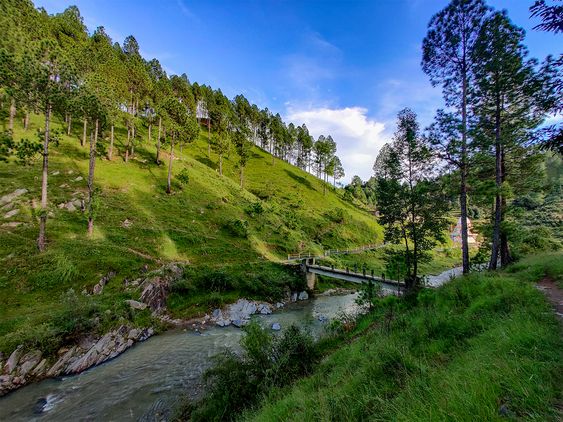
Exploring the Wilderness: Jim Corbett National Park
In the heart of the Indian state of Uttarakhand lies a sanctuary where nature’s beauty and wildlife’s grandeur blend seamlessly—the Jim Corbett National Park. Spanning over 520 square kilometers, this park is not just a haven for wildlife enthusiasts and adventure seekers, but it also carries a rich historical legacy that adds to its allure.
The Legacy of Jim Corbett
Named after the legendary British hunter turned conservationist, Jim Corbett National Park was established in 1936 and was originally called Hailey National Park. Jim Corbett, the man behind this transformation, had a profound love for the jungle and its inhabitants. He played a pivotal role in raising awareness about the importance of preserving these natural wonders.
Corbett’s legacy is still alive within the park, evident through the various initiatives aimed at conserving the diverse flora and fauna. Over the years, it has become a symbol of sustainable wildlife conservation and eco-tourism in India.
A Biodiversity Paradise
One of the key attractions of Jim Corbett National Park is its unparalleled biodiversity. The park is home to a stunning variety of wildlife, including Bengal tigers, leopards, Asian elephants, spotted deer, and sloth bears. For bird enthusiasts, it’s a paradise, with over 600 species of birds gracing the skies and trees, making it a birdwatcher’s delight.
The landscape is just as diverse, featuring dense forests, grasslands, rivers, and picturesque hills. The Ramganga River, which flows through the park, not only serves as a water source for the animals but also offers mesmerizing landscapes for visitors.
The Safari Experience
Exploring Jim Corbett National Park is an adventure like no other. The park offers various safari options, including jeep safaris, elephant safaris, and even canter safaris. These excursions take you deep into the wilderness, allowing you to witness the majestic wildlife in their natural habitat.
The elusive Bengal tiger is undoubtedly the park’s crown jewel. While spotting one is a matter of luck and patience, the thrill of coming face to face with this magnificent creature is an experience you’ll cherish forever. Besides tigers, you can also spot leopards, deer, wild boars, and a multitude of bird species during your safari.
A Glimpse into Local Culture

Jim Corbett National Park isn’t just about wildlife; it’s also an opportunity to immerse yourself in the local culture. The nearby villages offer a glimpse into the traditional life of the Kumaoni people. You can explore their customs, art, and cuisine while gaining a deeper understanding of the symbiotic relationship between these communities and the park.
When to Visit
The best time to visit Jim Corbett National Park is from November to June, as the weather is pleasant, and the chances of spotting wildlife are higher. The park remains closed during the monsoon season (July to October) to ensure the safety of visitors and wildlife alike.
Conservation and Responsibility
While Jim Corbett National Park is a treasure trove of natural beauty, it’s imperative to visit responsibly. Follow the park’s rules and guidelines to minimize your impact on the environment. Be a responsible traveler and support the conservation efforts that make it possible for future generations to enjoy this ecological marvel.
Jim Corbett National Park is not just a destination for adventure seekers and wildlife enthusiasts; it’s a place where you can reconnect with nature, learn about conservation, and appreciate the rich biodiversity that our planet has to offer. It’s a tribute to the legacy of Jim Corbett and a testament to what can be achieved when humans and nature coexist harmoniously. So, if you’re looking for an unforgettable journey into the wild, Jim Corbett National Park is waiting to welcome you with open arms.




